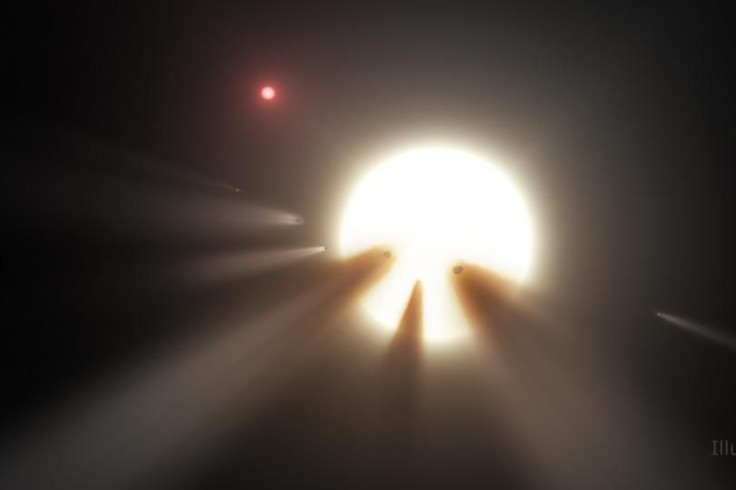‘Alien Megastructure’ Star Update: $100 Million Breakthrough Listen Project May Reveal Tabby’s Star’s Secrets

If there is an alien megastructure around the star KIC 8462852, the $100 million Breakthrough Listen project would be our best bet at detecting it. On Tuesday, University of California, Berkeley, announced that the project, funded by Russian billionaire Yuri Milner and backed by Facebook founder Mark Zuckerberg and cosmologist Stephen Hawking, would now use the 100-meter Green Bank Observatory in West Virginia over the next two months to observe the star.
“Everyone, every SETI program telescope, I mean every astronomer that has any kind of telescope in any wavelength that can see Tabby’s star has looked at it,” Andrew Siemion, director of the Berkeley SETI Research Center and co-director of Breakthrough Listen, said in a statement. “It’s been looked at with Hubble, it’s been looked at with Keck, it’s been looked at in the infrared and radio and high energy, and every possible thing you can imagine, including a whole range of SETI experiments. Nothing has been found.”
KIC 8462852, also known as “Tabby Star” — after the Yale University astronomer Tabetha Boyajian, who first noticed that the object was not behaving as it should — is located 1,400 light-years from Earth between the constellations Cygnus and Lyra. Based on observations conducted using NASA's Kepler Space Telescope between 2009 and 2013, a team led by Boyajian witnessed two unusual incidents, one each in 2011 and 2013, when the star's light dimmed in dramatic, never-before-seen ways.
This dimming indicated that something had passed in front of the star. At the time, a swarm of comets was proposed as the most likely explanation.
However, since then, several studies have argued that it is highly unlikely that a swarm of cometary could have caused the massive dip in the star’s luminosity. Other independent searches, especially tailored to detect alien radio signals and laser pulses, also drew a blank — disappointing proponents of the more outlandish theories that sought to explain the star's behavior as something caused by the presence of an “alien megastructure” — read dyson sphere — around it.
So why should the Breakthrough Listen project succeed where so many others have failed?
“The Breakthrough Listen program has the most powerful SETI equipment on the planet, and access to the largest telescopes on the planet,” Siemion added. “We can look at it with greater sensitivity and for a wider range of signal types than any other experiment in the world.”
This means that one way or another, we shall know for sure whether there are any little green men building a dyson sphere around Tabby’s Star.
“I don’t think it’s very likely – a one in a billion chance or something like that – but nevertheless, we’re going to check it out,” Dan Werthimer, chief scientist at Berkeley SETI, said in the statement. “But I think that ET, if it’s ever discovered, it might be something like that. It’ll be some bizarre thing that somebody finds by accident … that nobody expected, and then we look more carefully and we say, ‘Hey, that’s a civilization.’”
© Copyright IBTimes 2024. All rights reserved.












